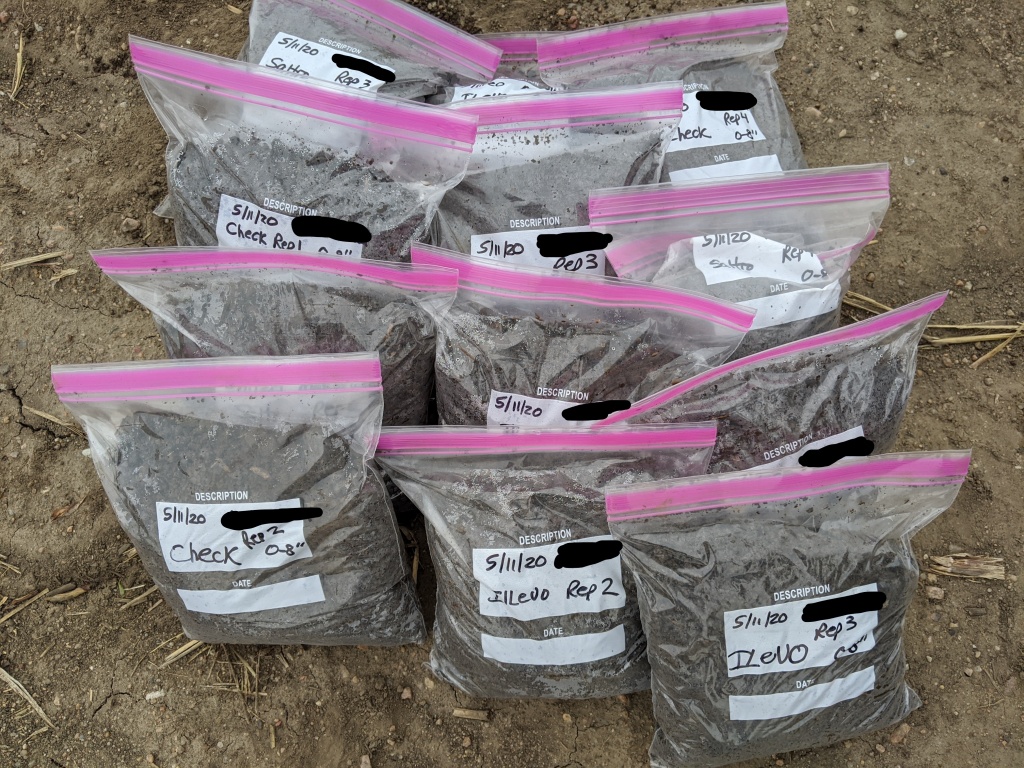| Upcoming Events: Oct. 13: Open for Business:Agripreneurship Series with Our Lavender Co., 6:30 p.m., Register: https://unl.zoom.us/webinar/register/WN_OFnsr4f9QNK11dDILrLq5w Oct. 15: Webinar: Update on Farm Income & Program Payment Projections, Noon (CST),Register Oct. 20-22: 2020 Nebraska Tourism Virtual Conference, https://visitnebraska.com/industry-events/2020-nebraska-tourism-conference Oct. 22: Webinar: Financial State of Ag for Nebraska Producers, Noon (CST), Register. Oct. 22 (and 4 consecutive Thursdays): Virtual Know Your Options, Know Your Numbers, 1-3 p.m., Register: wia.unl.edu/know Oct. 29: Webinar:Ballot Initiatives: Election Day 2020, Noon (CST), Register. |
Crop Update: This has been an interesting harvest season and yet, overall good one. To be at October 11th with so much of the area crop harvested is a blessing! I’ve heard growers thankful for the good harvest conditions and ability to go anywhere in fields without fear of getting stuck. Many were grateful for good soybean yields.
As we get further into corn harvest, there’s perhaps disappointment experienced on corn yields and moisture variance. Honestly, I’m struggling to explain some of it. Part of it is the difference in rainfall that we received in various parts of counties this year. There’s non-irrigated fields receiving 180-220 bu/ac which is a blessing! Another part is the impact of the July 8th wind event in which some fields had greater greensnap while others had more leaned plants. Depending on severity, was estimating and now seeing/hearing a lot of 180-240 bu/ac irrigated corn in those fields. The UNL Hybrid Maize model was predicting average yields for irrigated in this area of the State based on weather conditions. I just thought we may see actual yields go a little higher with how long it took to reach black layer. Have seen a couple really high yields with longer season numbers harvested wet.
Corn also greatly varies in moisture. Non-irrigated fields are quickly reaching 15.5% and lower. Irrigated fields range from 15-23%; what I can’t explain is that for hybrids planted in the same time-period, some short season ones are staying wet while some longer season ones are dryer. Everyone who has shared this situation with me had applied fungicide to their fields for southern rust control. Some also fertigated. Ultimately, just sharing what I’ve seen and heard thus far.

Received some questions this week on sampling for Soybean Cyst Nematode (SCN). It continues to be Nebraska’s top yield-limiting soybean disease with research showing it can cause up to 40% loss. The Nebraska Soybean Board is again sponsoring free sampling courtesy of soybean checkoff dollars. You don’t need a special bag to submit samples as a quart-sized plastic zip-top bag will suffice. If you had areas of a soybean field that yielded less than expected, particularly any areas that also showed sudden death syndrome or brown stem rot, consider taking a soil sample for SCN this fall. The female nematodes live in the top 8” of soil, thus sampling is as easy as taking your fertilizer sample for the following year’s corn crop and sending part of it in for an SCN analysis.
To collect a soil sample, use a soil probe to collect soil cores from a zig-zag pattern representing the lower yielding area of the field. For comparison, it’s wise to also take another sample from a better yielding area of a field. I’ve found that around 12 cores per sample is enough to provide around a 2 cup sample of soil that will fit in a ziplock type bag (and not have excess that needs to be dumped out). Be sure to label the bag with your contact info, field name, or other ID to report the results back to you. Also be sure to fill out a completed sample submission form requesting SCN analysis and mail the samples to the UNL Plant & Pest Diagnostic Clinic (1875 North 38th Street, 448 Plant Science Hall, Lincoln, NE 68583-0722). For those who submitted samples during the summer, campus mail is better now that the University campus is open again.
Caring for Drought-stressed trees/shrubs: With the continuing dry conditions, this is a critical time to prepare woody plants for winter and prevent winter injury, especially to evergreens. Dry fall conditions can reduce the number of leaves, blooms and fruits trees produce the next season. Trees often delay the appearance of drought-stress-sometimes months or years after the stress occurs. Even after the drought has ended, trees that experience drought stress are more susceptible to secondary attack by insect pests, which can be addressed by companies like pest control richmond va, and disease problems, such as borers and canker diseases, which can cause tree death. When watering, moisten the soil around trees and shrubs, up to just beyond the dripline (outside edge of tree leaf/needle canopy), to a depth of 8 to 12”. Avoid overwatering; but continue to water until the ground freezes as long as dry conditions persist.


































